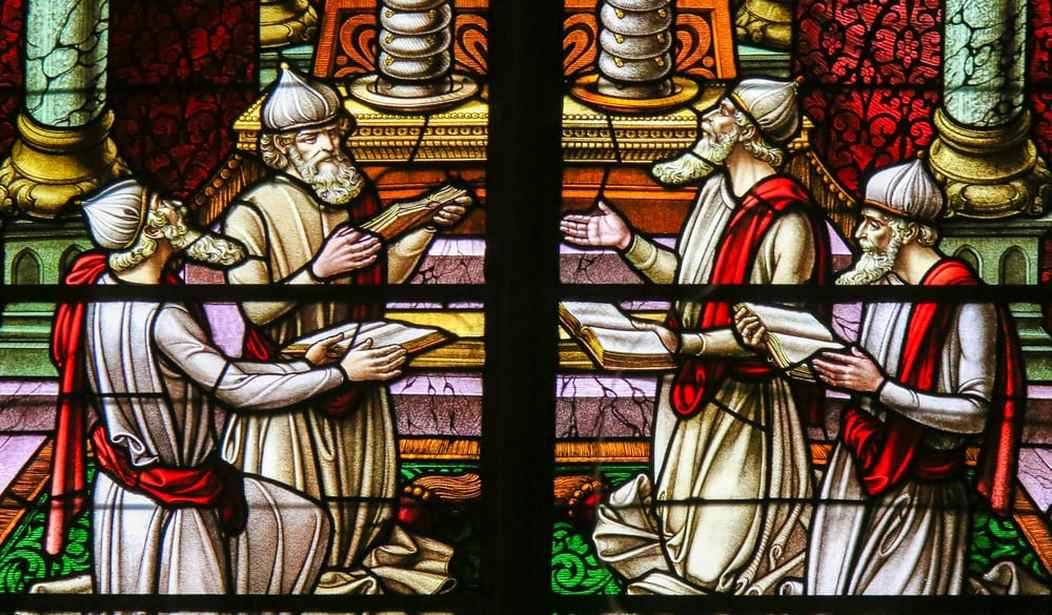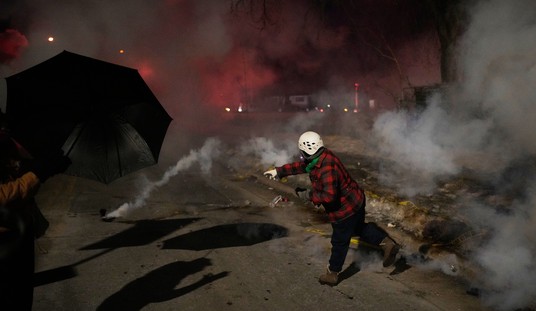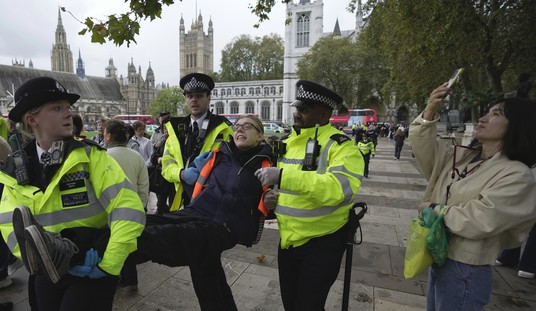A recent article in PJ Media seeking to correct misapprehensions of certain famous passages from the Christian Bible highlights one of the most misunderstood terms in Western civilization: “Pharisee.” As it is commonly used, the word has become a metaphor for hypocritical self-righteousness.
In fact, the term “Pharisee” (Greek Pharisaios) is a transliteration of the Hebrew word parush, which means roughly “separate, apart, distinguished” and is to this day a common family name in Israel, in particular in certain prominent families in Jerusalem.
Who were the përushim of the Second Temple era, and why should modern Jews proudly adopt the term as a family name?
The chain of transmission of the Oral Torah is recorded in the first mishna in Avoth: Moshe received he Torah from Sinai, and entrusted it to Yëhoshua‘ bin Nun, his successor. Yëhoshua‘, in turn, entrusted it to the zëqénim (literally “elders”), who were the first Sanhedrin. They in turn entrusted it to the shofëtim (“Judges”), who formed successive sessions of the Sanhedrin. And then they to the Prophets, who in turn handed it over to the Anshei Kënesseth haGëdola (the “Men of the Great Assembly,” the last three prophets were actually members of this august group). They, under the leadership of ‘Ezra haKohén, reconstituted Jewish life after the disaster of the Babylonian Exile.
Near the end of the Second Temple Period, Talmudic sources make clear that the population of Judaea was comprised of at least five different groups of people:
- The orthodox Përushim (Greek Pharisaioi, or “Pharisees”), so-called because they were distinguished by their learning and their zeal for punctilious observance of the mitzvoth which they preserved. The Talmud Yërushalmi (Bërachoth IX, 5) tells us that there were seven subgroups of Përushim, of whom the most important are Përushim, mé’ahava (“out of love”). They are compared to Avraham, who made his evil inclination good, as it is written: “Umatzatha eth lëvavo ne’man lëfanecha” (“And You found his heart faithful before You”; Nehemiah IX, 8).
- The ordinary Jewish people of the country, called the ‘am ha’aretz (“people of the land”), also generally Orthodox in their observances but less learned and therefore less careful due to their ignorance.
- The heterodox Tzëduqim (Greek Saddoukaioi or “Sadducees”), a breakaway group founded by one Tzadoq, originally a student of Antigonos, Rabbi of Socho, who was a student of Shim‘on haTzaddiq (“Simon the Just”), last surviving member of the Anshei Kënesseth haGëdola and Kohén Gadol when Alexander the Great swept through the country on his way to conquering Persia. They were direct opponents of the Përushim who attempted to deny the authority of the Oral Torah and ended up created various competing versions of their own.
- The Asyei (Esaioi in Greek or “Essenes”), who were not so much a separate sect as a group steeped in the lore of herbal healing (asya is Aramaic for “physician”).
- Everyone else, the non-Jewish inhabitants of the region (particularly Greek-speaking colonists and the so-called Samaritans, known in Hebrew as Kuthim and in Aramaic as Kutha’ei, whose ethnic origins lay in Mesopotamia).
Add to this the complication that the Jewish population was divided linguistically. Again, as Talmudic sources assert and as has been brilliantly confirmed by the work of the late Israeli archaeologist Dr. Yigael Yadin, the Jews of Judaea proper, principally the environs of Jerusalem and points south, clung to the Hebrew language until the mass slaughter and exile which came in the wake of the failed Bar Kochba revolt of the mid-Second Century CE. The people of the Galil and upper Golan spoke a dialect of Aramaic in their daily lives, using Hebrew largely for the sacred purposes of prayer and study.
It would seem to be correct, then, to assume that the vast majority of modern Jews are descendants of the first two groups named: the Përushim, who were the ancestors of certain prominent rabbinical families, especially among the Sefardim, lineal descendants of those Jews who were exiled from Judaea by the Romans in the wake of the First Century Jewish War, which saw the destruction of the Holy Temple in Jerusalem, and the Second Century Bar Kochba Revolt which followed it; and the rest from the ‘am ha’aretz, traditionally observant but more simple people.
To give some idea of the tensions which existed in the society of those days, there is a famous anecdote of Rabbi ‘Aqiva ben Yoséf. He was an example of a cross-over, someone who had been a member of the humblest stratum of the ‘am ha’aretz who applied himself with his wife’s encouragement and urging to learning, and became the greatest scholar of his day (the Second Century) — the single rabbi most often quoted in the Mishna. One day, when Rabbi ‘Aqiva was telling some students about his past life, he said: “When I was of the ‘am ha’aretz, I would say, Who will give me a Torah scholar and I’ll bite him like a donkey!” His students protested, “Rabbi, say like a dog!” And he answered that a donkey’s bite breaks bones, while a dog’s does not (Pësachim 49b).
On the other hand, elsewhere in the Talmud we learn of the two great scholars Shëma‘ya and Avtalyon. It was customary for the Kohén Gadol, on leaving the Holy of Holies alive after the Yom Kippur service, to make a large feast in Jerusalem to break the fast; accordingly, he was a rather popular person at the end of the Day of Atonement. So the incident is recorded that the crowd following the Kohén Gadol saw Shëma‘ya and Avtalyon walking across the street, and left to crowd around them (Yoma 71b).
The attitude of the ‘am ha’aretz towards the Torah scholars was ambiguous, to say the least.
To give an idea of the sort of conflicts which existed between the Përushim and the Tzëduqim, here is a ruling from Yadayim IV, 6: Rabbi Yochanan ben Zakkai (the leading Parush of his day, near the beginning of the First Century) ruled that handling a Torah scroll with the bare hands renders the hands unclean, because of the great affection and respect Jews have for the Torah, whereas the Tzëduqim held otherwise.
Which says all that’s necessary to know about the affection of the Tzëduqim for the Torah, Oral or Written; to this day, the halacha follows Rabbi Yochanan ben Zakkai’s ruling.









Join the conversation as a VIP Member